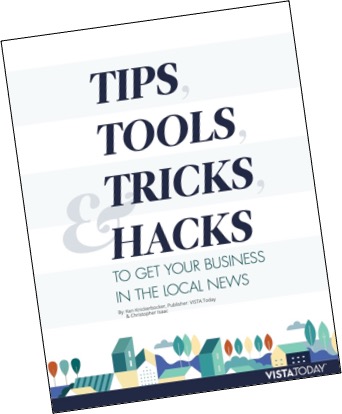How to Hedge your Bets in the Big Gamble of Releasing Information to the Press

Last week, we discussed some of the organizational events that can trigger the issuance of a press release. As a recap, it must be timely information that a journalist’s readers will find valuable.

Now that the decision has been made to go forward with a press release, how do you assure that it will get published?
The short answer is that you don’t. Unless you have a distinct relationship with a media organization (more on that later) there is no guarantee that a journalist will use the information you’ve provided.
You can, however, increase the likelihood.
The use of a press release goes back more than a century, when it was first used to disseminate information about a 1906 Atlantic City train accident. In that 100 years, things have changed massively; however, despite that passage of time, a well-crafted, targeted press release can still get the job done.
These media relation workhorses can still be a brand’s best friend.
The key, like most things in life, is in the details:
- Tell a story. Even your financial results can be narrative. Reporters’ job is to engage their audience in their content. The more you can help with that goal, the greater likelihood your material will get picked up.
- Be relevant and creative. Get readers/viewers to care about your news. People connect with people. Make those connections. Pull a few heartstrings when you can.
- Make every word count. Reporters won’t hunt for your point or edit it into focus.
- Ensure the grammar, spelling and syntax are perfect. Don’t guess at things like serial commas or spaces between dashes. Look them up and use them correctly. The less manipulation a reporter will need to do with your content, the greater the likelihood it will be used.
- Use real quotes. Even if your CEO uses words like leveraging, plethora or amazing, experienced journalists will realize their overuse in print and most likely edit them out. Save them the time.
- Think visually. Scan your release, eyeballing it for huge chunks of copy. Break up long paragraphs into more digestible bites. Use pull-out quotes to engage your journalist. Provide excellent, clear, resizable photos and illustrations. Clear all copyrights before sending.
- Include links to supplementary charts, graphs and audio clips, downloadable from your headquarters. Even an article run traditionally in print will also run online or on a podcast. Facilitate that process.
- Brand everything: The release, data, findings, insights and visuals should all foot to you.
- Do the analysis for the press. Don’t just report on a rise in sales, a decline in productivity, a shift in consumer habits. Interpret what these market movements mean. Trend analysis is a forest of subtlety and inference; navigate that on behalf of your issue to make it clearer to the press why your development is important in a greater context.
- Send appropriately. No blind sending of mass emails. Build relationships with those reporters and news outlets most likely to carry your message. And then treat it like gold. Do not miss deadlines; do not object to edits or cuts; do not fudge facts.
- Post your releases on your own website and social media channels.
- Monitor for results; clarify as needed. There are multiple methods of tracking analytics. Find out where your information was published, who read it and what the impact was.
- When you make it on air or in print, thank your journalist with a short email or social post.
Even with all your care and feeding duties buttoned up, a press release can still be like a message in a bottle.
Might get picked up. Might not.
A more reliable tactic is establishing an official relationship with a publication like VISTA.Today. There are budgetary impacts you’ll need to consider. But in the long run, having a professional megaphone at your side, sympathetic to your needs and willing to help, may be one of the best investments you’ll ever make.
Connect With Your Community
Subscribe to stay informed!
"*" indicates required fields
















































![95000-1023_ACJ_BannerAd[1]](https://vista.today/wp-content/uploads/2023/03/95000-1023_ACJ_BannerAd1.jpg)




